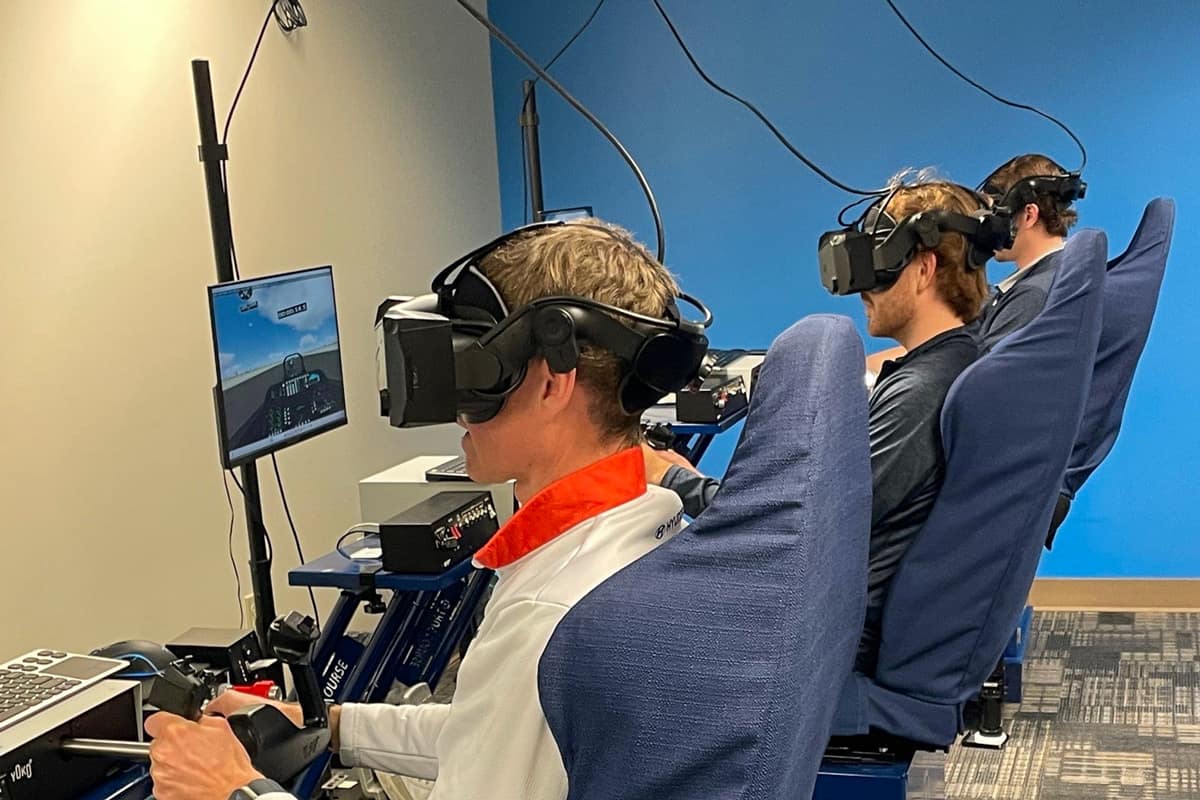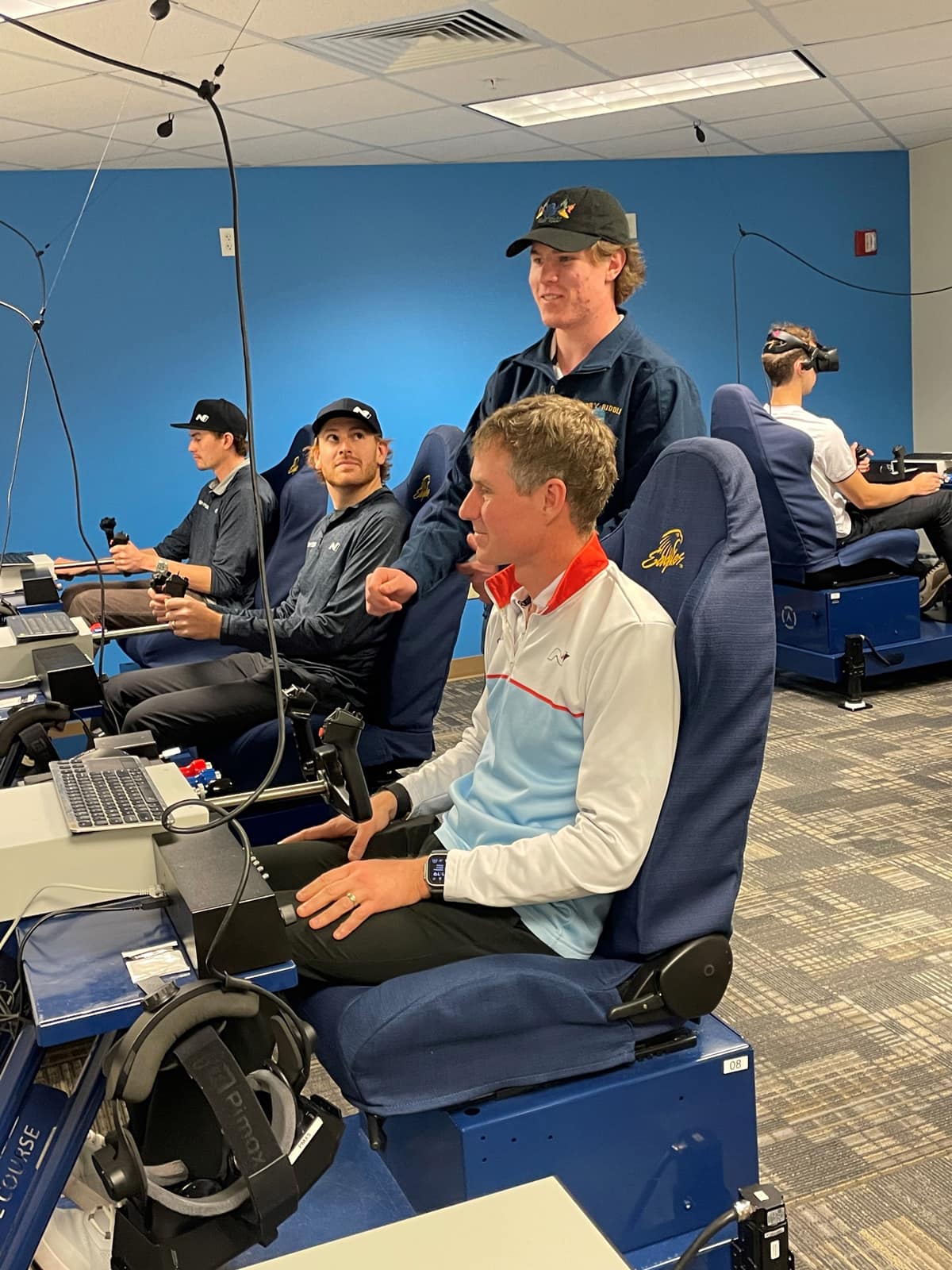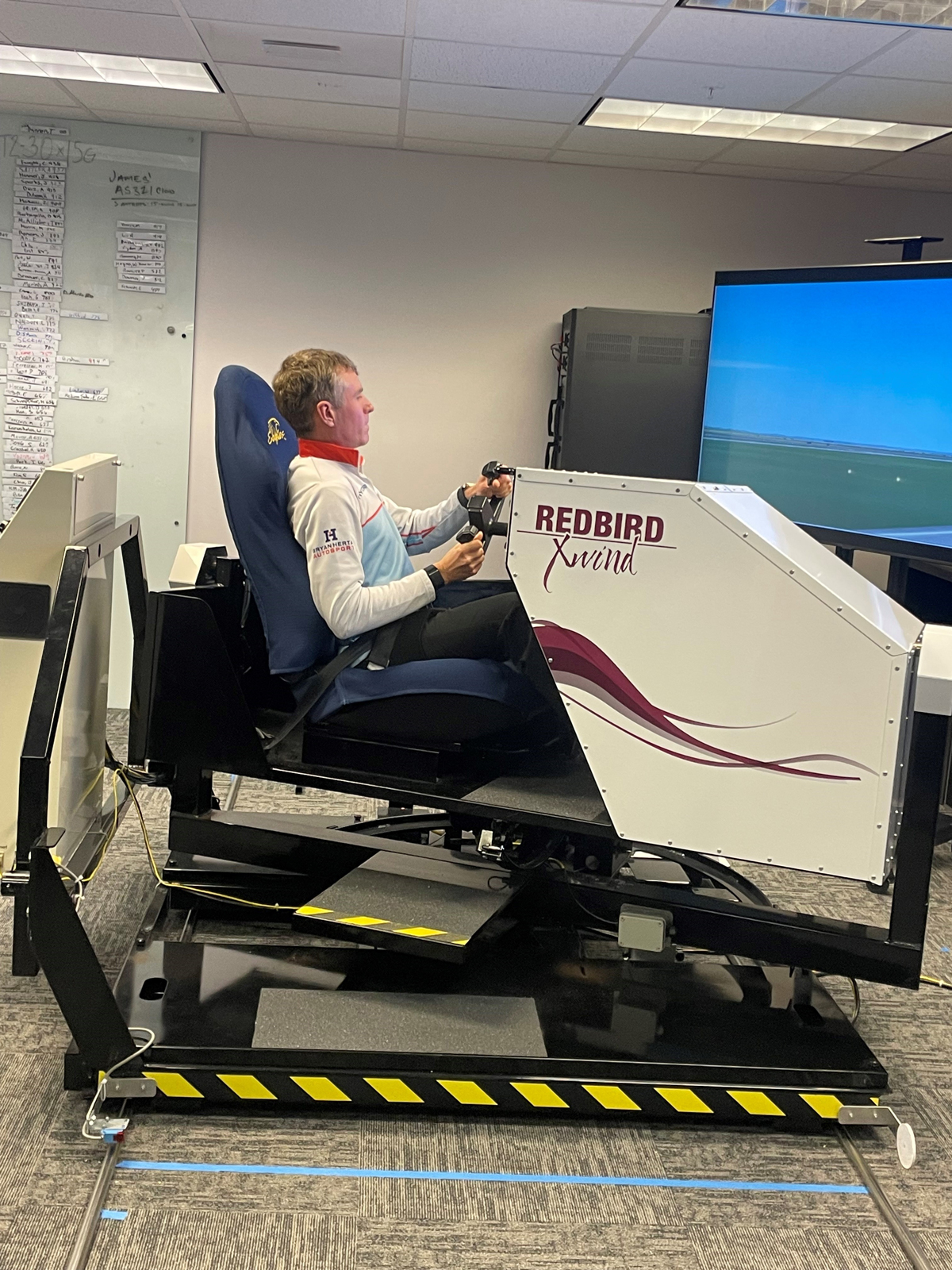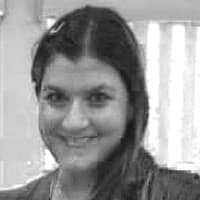From Racetrack to Runway: Pro Drivers Test Flight Skills at Embry-Riddle


Embry-Riddle student employee Ryan Obert explains the Canyon Time Trail flight simulation to Wilkins, Filippi and Gottsacker, (Photo: Embry Riddle/Melanie Stawicki Azam)
Would the skills race car drivers possess make them naturally good pilots?
A group of ten professional drivers competing at the Rolex 24 at Daytona got a chance to find out during a visit to the Advanced Flight Simulation Center at Embry-Riddle Aeronautical University. The Hyundai Motorsport North America drivers, with Bryan Herta Autosport, participated in four flight simulator challenges. The simulated aircraft flown ranged from a Cessna to a F-22 and a Canadair commercial airliner.
“It was an incredible experience,” said Mark Wilkins, a driver from Toronto, Canada. “There are a lot of things that go hand in hand with racing and flying.”
The activity was part of the Hyundai Drivers’ Camp, a program designed to challenge drivers physically and cognitively.
“We push them to be the strongest they can be on and off the track,” said Katie Brannon, public relations manager for Bryan Herta Autosport. “This experience at Embry-Riddle was really a once-in-a-lifetime opportunity.”
James Hanover, Embry-Riddle’s flight simulations program training manager, said the goal was to give the race car drivers a taste of the devices the university’s flight students use from start to graduation. The team members competed in a Crosswind Challenge, Canyon Time Trial, Carrier Landing Competition and Precision Approach Challenge using four different flight simulators.
“They got a real-life experience of what a pilot’s flight training would be like,” said Hanover.
Wilkins, the Canadian driver, said the experience at Embry-Riddle allowed him and his teammates to apply their skills to a completely different discipline. For him, the exercises were particularly relevant, since he started taking flight lessons in November.
“What I like about it is that it’s a real mental challenge,” he said. “Like racing, flying requires focus and precision.”

Wilkins participates in the Crosswind Challenge simulation. (Photo: Embry Riddle/Melanie Stawicki Azam)
Harry Gottsacker, a race car driver from San Antonio, Texas, enjoyed the Canyon Time Trial challenge, which involved flying an F-22 through the Grand Canyon, and the Carrier Landing Competition that required participants to land on an aircraft carrier in the Atlantic Ocean.
“It gave me flashbacks of the movie ‘Top Gun,’” he said. “Like racing, flying is very similar in that you have to keep your wits about you.”
Father-and-daughter race team Larry and Riley Pegram, who are from Hebron, Ohio, said they came away with a new appreciation for the complexity of flying a plane and how much knowledge a pilot needs to have.
“It gives you a new perspective on how much skill is needed to fly these planes,” said Larry Pegram.
Preston Brown, a race car driver from Chapel Hill, North Carolina, was impressed with the Precision Approach Challenge, which involved landing a commercial jet at San Francisco’s airport. That simulation used the university’s FAA Level-D CRJ-200 full-motion simulator, the same one used by leading regional airlines.
“That was a lot of fun and really immersive,” said Brown. “Flying and racing both require intense hand-eye coordination and precision. Just like with racing, in flying, you need to anticipate what’s coming.”

 Melanie Stawicki Azam
Melanie Stawicki Azam